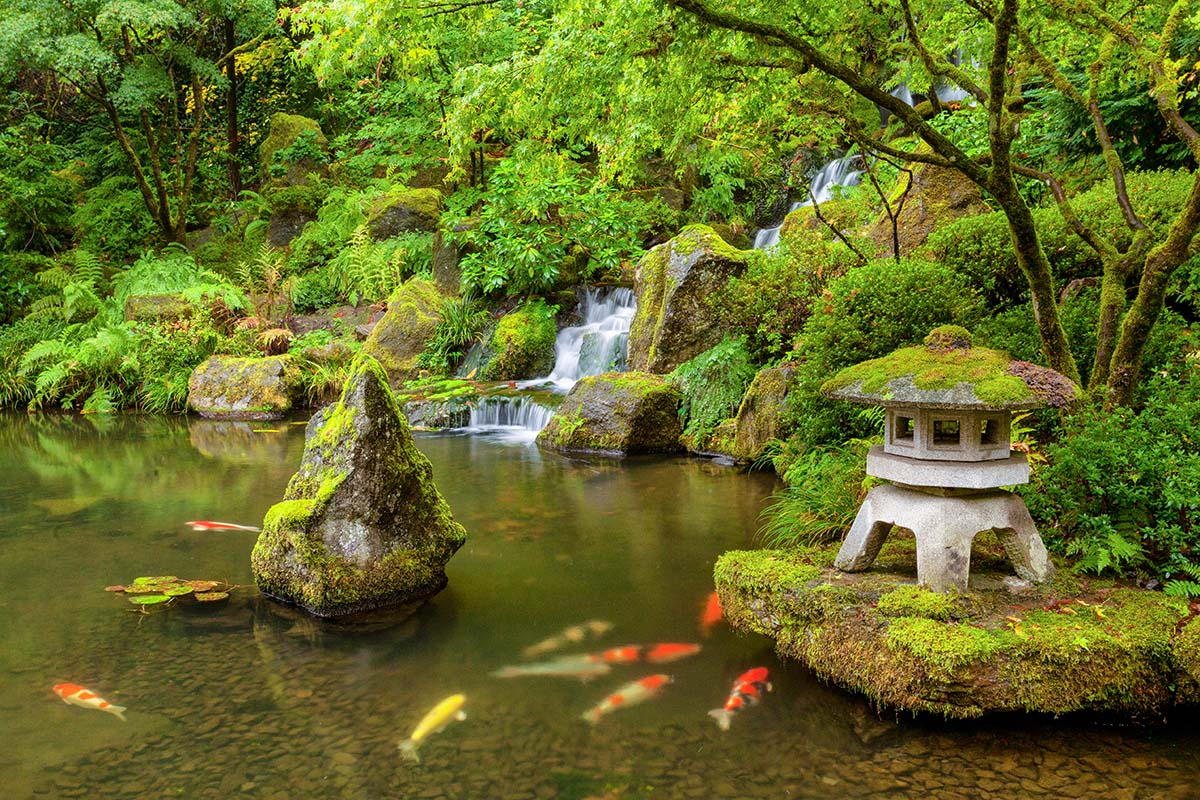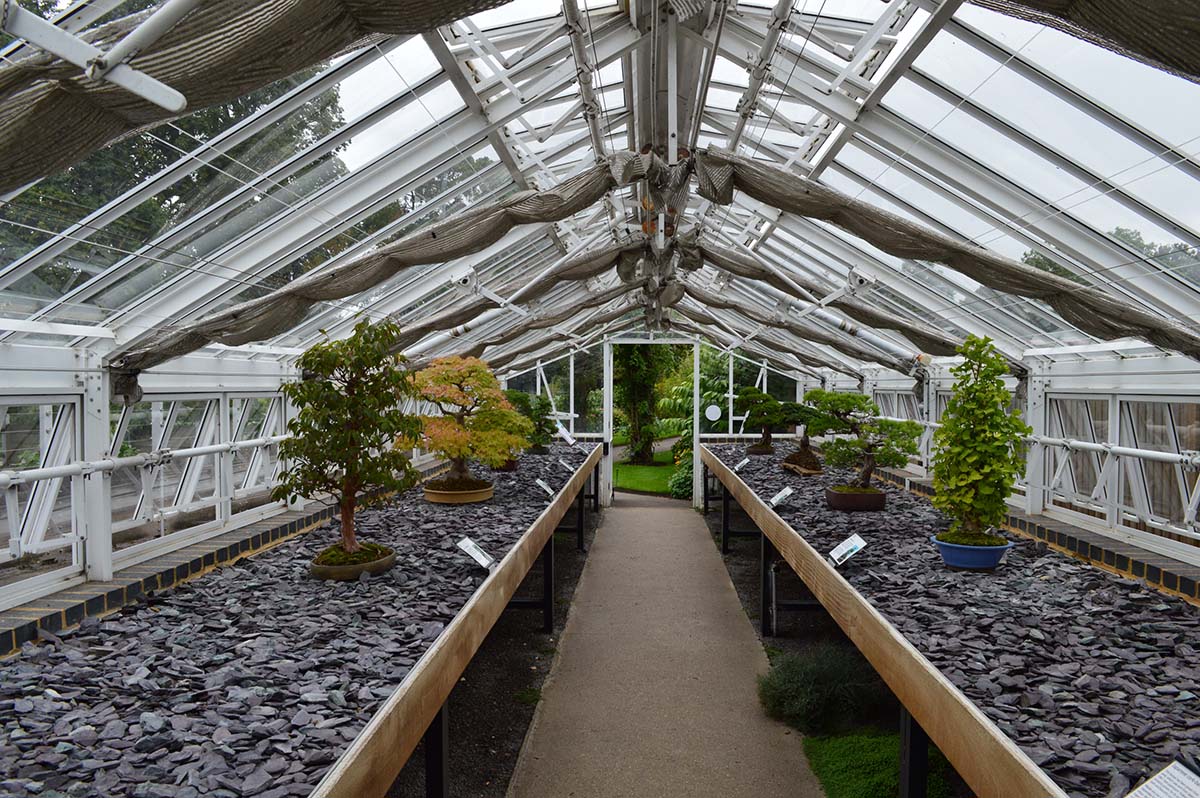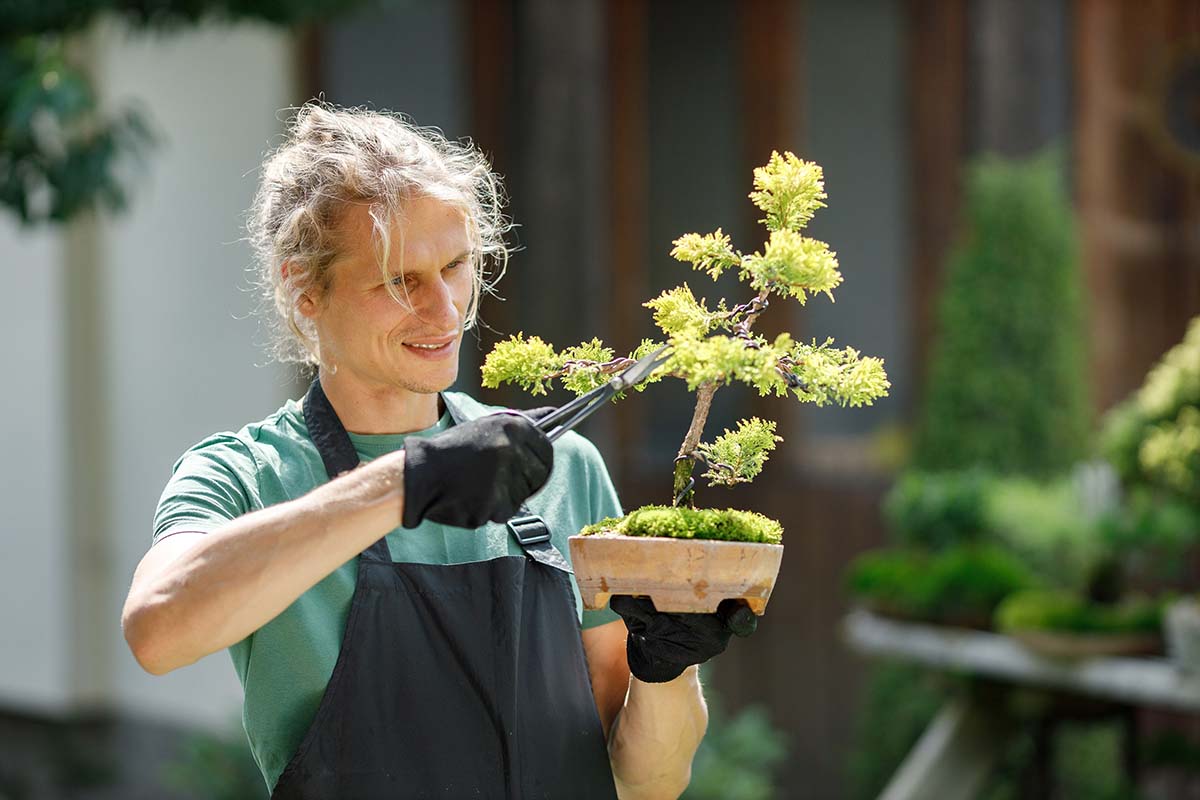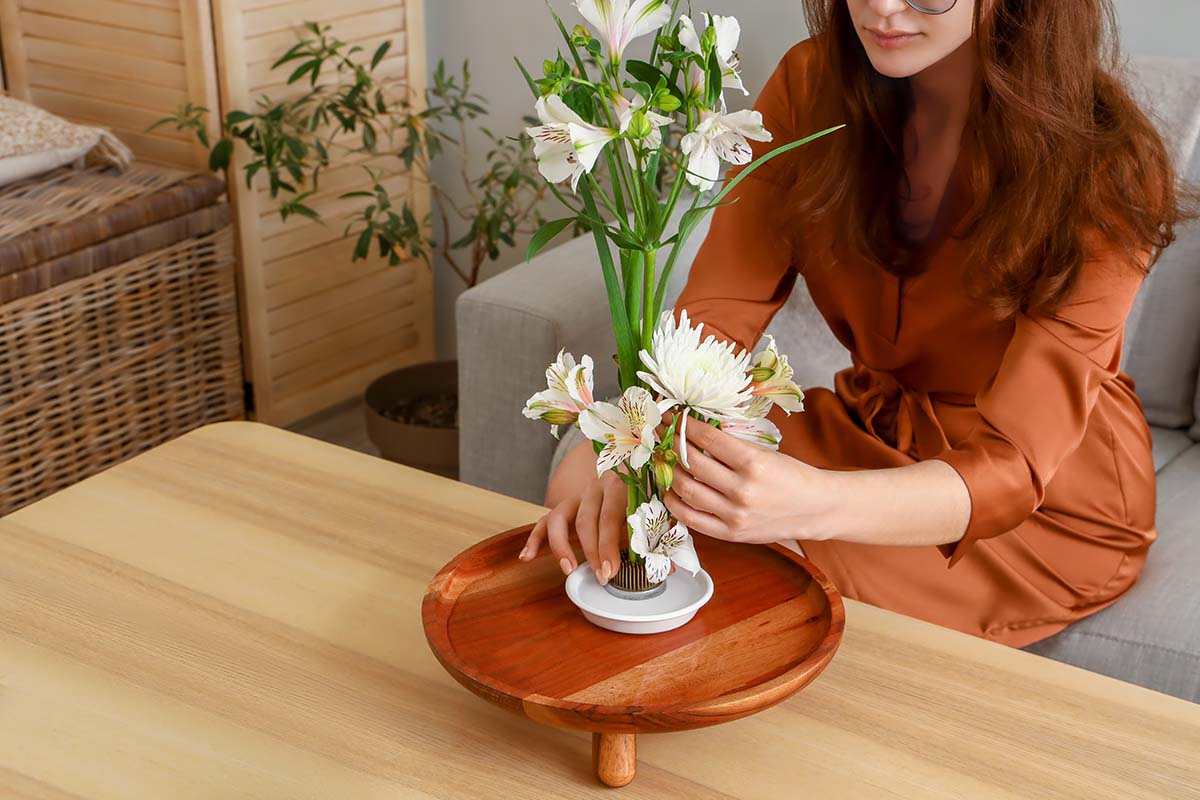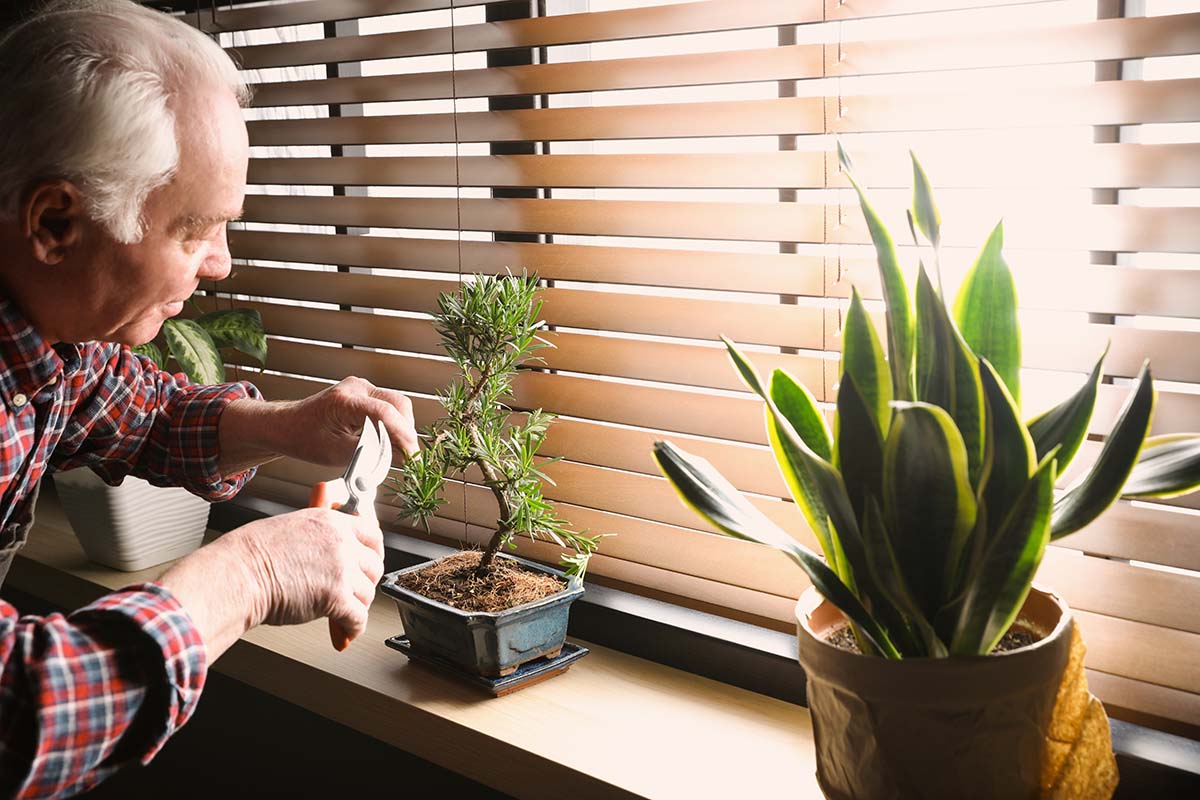Japanese gardens, bonsai, and ikebana have become highly regarded and greatly appreciated symbols of serenity and beauty around the world. From methodically landscaped zen gardens and meticulously pruned miniature trees to mindfully arranged floral bursts, these traditions have woven their way into global culture, offering not just artfully designed aesthetic appeal but also deep philosophical insights. What began as expressions of Japan’s spiritual and natural reverence are now an essential part of green spaces in cities across the globe — as well as in the homes and hobbies of green thumbs, worldwide.
Let’s take a closer look at how these Japanese traditions have spread and what they can teach us about balance, mindfulness, and the art of living.
Sublime, serene sanctuaries for all
Zen gardens, or karesansui, are minimalist spaces that invite reflection and meditation. Traditionally, these gardens feature subdued plants with neutral green foliage (like bonsai, dwarf conifers, and Japanese maples), dry landscapes, raked gravel, and carefully placed rocks that symbolize mountains and bodies of water. The simplicity of these gardens encourages a quiet, intentional approach to nature.
The history of Zen gardens dates to 14th century Japan, where they were created as places for monks to meditate and reflect. Over time, the aesthetic and spiritual aspects of Zen gardens captured the attention of the Western world. The growing interest in Japan’s unique culture during the 19th century, coupled with the cultural movement known as Japonisme (or Japonism), sparked a fascination with these gardens, and they soon became fixtures in Western cities.
Take, for example, the Portland Japanese Garden in Oregon, one of the most famous in the U.S. It’s an oasis of peace in the heart of the Pacific Northwest, with its Zen garden offering a space to slow down and reconnect with nature. The symbolism behind its design draws on centuries-old traditions, bringing the meditative essence of Japan to the bustling streets of Portland, Oregon. Similarly, the Japanese Friendship Garden in San Diego, California; the Bloedel Reserve on Bainbridge Island, Washington; the Peace Pagoda in Battersea Park, in London’s Borough of Wandsworth; the Japanese Landscape at Kew Gardens in Richmond, southwest London; and Kyoto Garden in Holland Park, in the west London Royal Borough of Kensington and Chelsea also showcase tranquil Zen gardens, inviting visitors to experience the serene yet stunning splendor of Japanese design principles.
Small sculpted trees, big soulful impact
While Zen gardens may represent nature’s vastness, bonsai focuses on its miniature form. These tiny trees, often grown for decades, symbolize patience, care, and the harmony between human skill and nature’s majesty. Bonsai cultivation has become an art form that spans continents, with people around the world learning how to create these living art forms.
Bonsai trees require a delicate balance of pruning, wiring, and shaping. While it might seem intimidating, the process of caring for a bonsai tree is deeply rewarding. The slow, deliberate act of shaping a tree over years teaches patience, a core principle in Japanese culture. Whether it’s a small juniper or a majestic pine, bonsai trees offer an opportunity to connect with nature on a deeper level.
In cities like London, where green spaces are cherished, bonsai collections are a growing feature of botanical gardens. The Royal Botanic Gardens at Kew, for instance, hosts one of the world’s most impressive collections of bonsai trees, many of which are over a century old. This blend of artistry and horticulture draws garden enthusiasts from all corners of the world to witness the beauty of these small but mighty trees.
INSIDER TRICK : To keep your bonsai tree healthy, water it thoroughly when the soil feels dry, but make sure the pot has proper drainage—bonsai don’t like soggy roots! Also, don’t forget to prune your bonsai regularly to maintain its shape. It’s a slow process, but that’s what makes it so rewarding. Whether it’s a juniper, a pine, or a ficus, each tree is unique, and learning how to nurture it teaches patience and mindfulness.
Artistic blooming beauties, by design
Ikebana (or kado, “the way of flowers”), the Japanese art of flower arrangement, may seem like an unlikely cultural export, but it’s another example of how Japan’s aesthetic principles have taken root around the globe. Unlike traditional Western flower arrangements, which focus on symmetry, ikebana embraces asymmetry and simplicity. Each arrangement is a reflection of the natural world, where the flowers, stems, and leaves are placed thoughtfully to create a harmonious composition.
FUN FACT : In ikebana, each part of the flower arrangement has a symbolic meaning. The tallest branch represents the heavens, the middle branch represents humanity, and the lowest branch represents the earth. This trinity creates a balanced, harmonious arrangement that reflects the natural world.
Ikebana has spread across Europe and the U.S., with many institutions offering classes in this delicate art. Whether it’s a single branch of cherry blossoms or an elaborate display of lilies and orchids, ikebana teaches us to embrace the beauty in imperfection and to live with mindfulness.
PRO TIP : When arranging flowers, focus on the “line” and “space” more than the flowers themselves. Start with a single branch as your focal point and build out from there. You don’t need a ton of flowers—simplicity is key. This method helps you appreciate the beauty in every element, rather than overcrowding the arrangement.
Japanese gardens, with their emphasis on natural beauty and quiet contemplation, are an antidote to the chaos of modern life. In a world that’s constantly on the move, these gardens offer us a chance to slow down, breathe, and find peace.
Why all this matters in today’s modern world
As global cities grow and urban spaces become more crowded, the need for places that offer tranquility has never been greater. Japanese gardens, with their emphasis on natural beauty and quiet contemplation, are an antidote to the chaos of modern life. In a world that’s constantly on the move, these gardens offer us a chance to slow down, breathe, and find peace. Meanwhile, the disciplines of bonsai and ikebana likewise have multiple beneficial effects on mental and emotional health.
Experts point to the therapeutic benefits of spending time in green spaces, as well as engaging in mindful activities (like bonsai cultivation and ikebana), noting how they can reduce stress, enhance creativity, and promote emotional well-being. Whether it’s the sound of running water, the gentle sway of a bonsai tree, or the graceful lines of an ikebana arrangement, these elements provide a much-needed break from the noise of daily life.
PRO TIP : Even if you can’t visit a full-fledged Japanese garden, you can still reap the benefits by creating your own little oasis at home. Try setting up a small Zen garden or bonsai tree in your space, or practice ikebana with a few simple flowers. These practices don’t require a lot of time or space, but they can transform the way you experience nature. Moreover, the steps involved in these practices automatically give you pause from the cares of daily life.
A cross-pollination of ideas
The ethereal, elegant, endearing beauty of Japanese gardens, bonsai cultivation, and ikebana arrangement lies not just in their remarkable design aesthetic but in what they embody: a harmonious relationship between humans and nature, as well as a reverence for beauty in impermanence (an ancient Japanese philosophy known as wabi-sabi). As more people around the world discover the wisdom embedded in these traditions, it’s clear that Japanese culture continues to influence and inspire. The global spread of these cultural practices demonstrates how nature-based philosophies can truly transcend time and expand beyond borders. By embracing Japanese garden design, bonsai cultivation, and ikebana, we gain not only aesthetic value but also a deeper understanding of the interconnectedness of life.
In the end, creating or visiting a Japanese-inspired garden isn’t just about appreciating beautiful landscapes—it’s about inviting a bit of Japanese philosophy into daily life. Whether it’s through the calm of a Zen garden, the patience of growing and caring for a bonsai, or the mindfulness of arranging flowers into sculpture-like pieces, these practices offer timeless lessons in living with intention and peace. Go ahead; rake some gravel, trim a leaf, arrange a stem—and see where it takes you. You may just surprise yourself.

